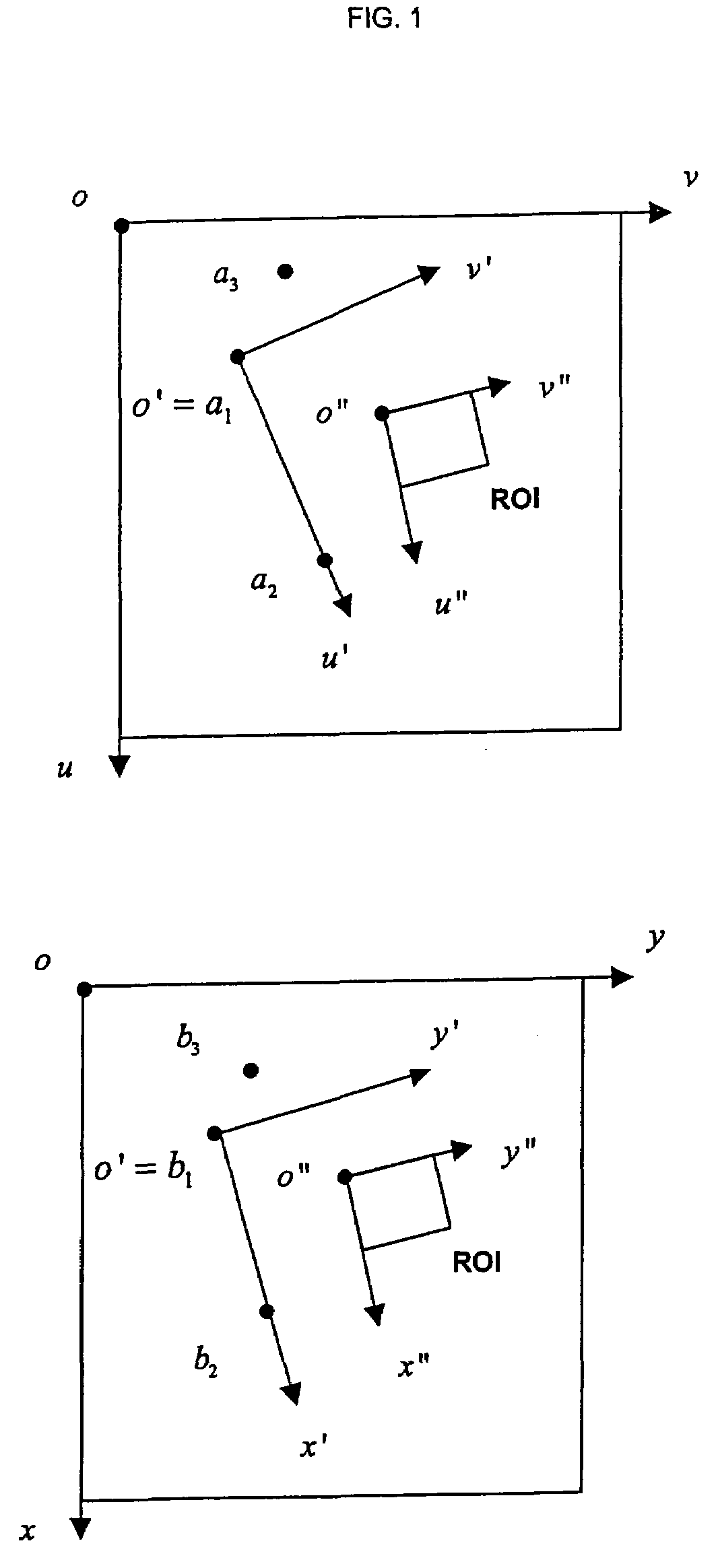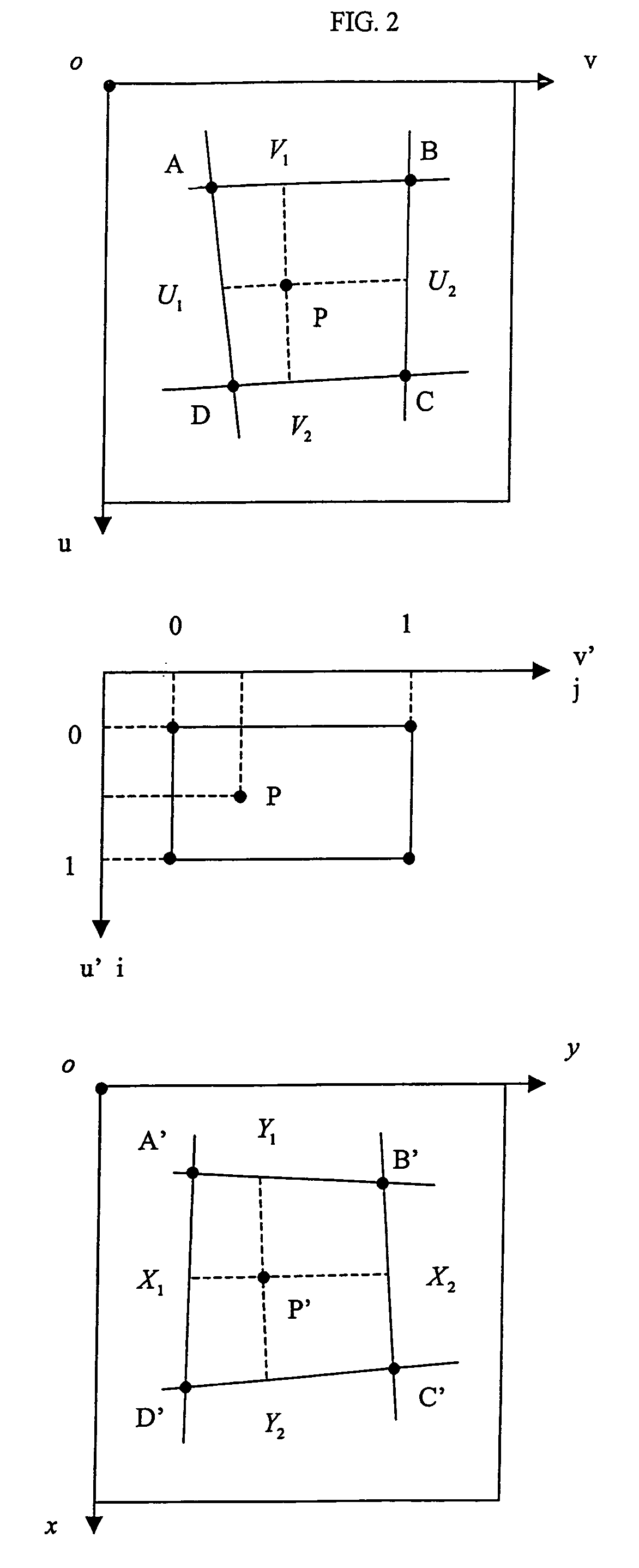Method for automatically mapping of geometric objects in digital medical images
a technology of digital medical images and geometric objects, applied in image enhancement, color signal processing circuits, instruments, etc., can solve the problems of large number of mouse manipulations, slow method, fatiguing and error-prone, etc., and achieve the effect of constant radiographic finding
- Summary
- Abstract
- Description
- Claims
- Application Information
AI Technical Summary
Benefits of technology
Problems solved by technology
Method used
Image
Examples
second embodiment
[0254]Instead of extracting ROIs from the image to be scored and presenting them in juxtaposed to the reference pictures, an second embodiment, that uses the spatial mapping operation based on anchor points, consists in mapping the reference pictures into the image, in close vicinity to the skeletal region (e.g. in a touching manner to the ROI of a particular region). Using the scroll wheel of the mouse, or the up and down keys of the keypad, the reference pictures are scrolled through, and the user selects that reference stage corresponding to the largest similarity between reference picture and skeletal region. This manner of operation has the advantage that the full input image remains visible to the user.
third embodiment
[0255]The ROI and reference picture mapping is further advantageous in a third embodiment based on registration where similarity is measured by pixel-wise comparison based on correlation. In this embodiment the reference picture is mapped into the image in a spatially coinciding manner so as to overlay on the corresponding skeletal site. The anchor points with respect to which the skeletal regions are referenced are used to superimpose the reference picture onto the skeletal region to be scored. A linear or non-linear image registration operation is applied to the ROI to find its most corresponding position with respect to the skeletal site and the degree of similarity of the registration is recorded. This registration operation is repeated for each of the reference pictures, and that stage is selected for which the degree of similarity is the highest.
Radiological Image Quality Control
[0256]The current invention is further particular useful in the context of quality control and qual...
PUM
 Login to View More
Login to View More Abstract
Description
Claims
Application Information
 Login to View More
Login to View More - R&D
- Intellectual Property
- Life Sciences
- Materials
- Tech Scout
- Unparalleled Data Quality
- Higher Quality Content
- 60% Fewer Hallucinations
Browse by: Latest US Patents, China's latest patents, Technical Efficacy Thesaurus, Application Domain, Technology Topic, Popular Technical Reports.
© 2025 PatSnap. All rights reserved.Legal|Privacy policy|Modern Slavery Act Transparency Statement|Sitemap|About US| Contact US: help@patsnap.com



